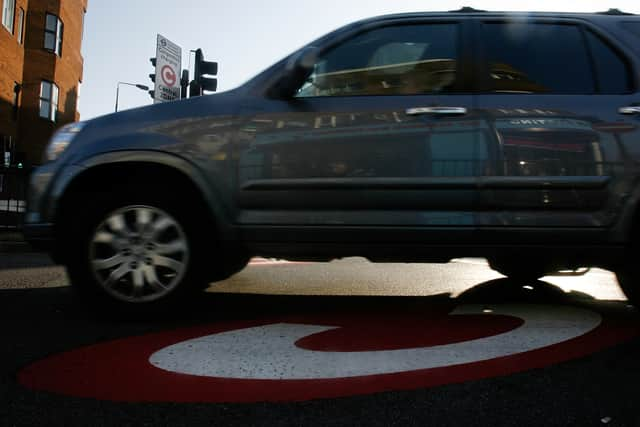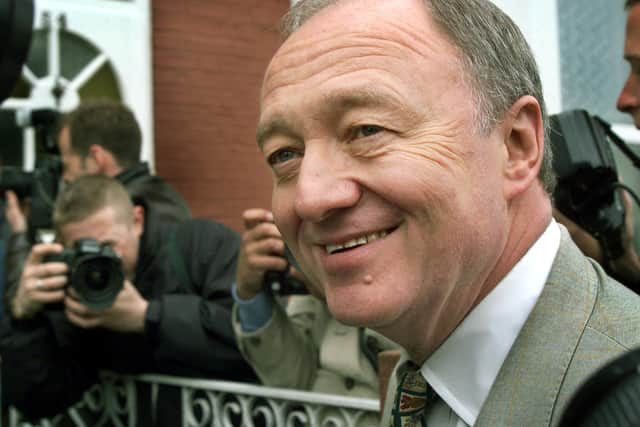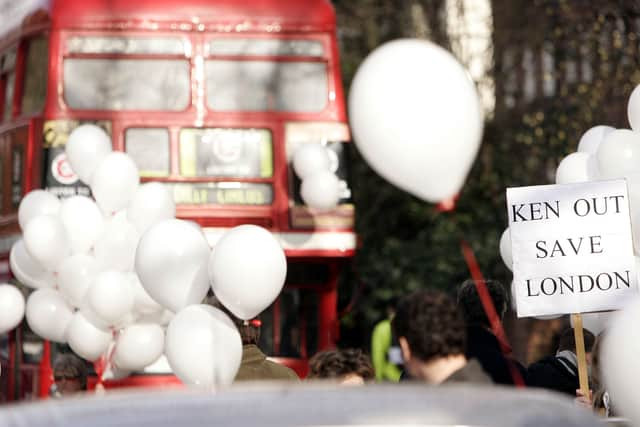London Congestion Charge: How TfL’s roads charging began - ahead of ULEZ expansion
and live on Freeview channel 276
Referred to by former London mayor Ken Livingstone as the only thing in his political career that “turned out better than I expected”, the Congestion Charging Zone, or CCZ, was the first major clean-air scheme of its kind in the capital - and a precursor to the forthcoming Ultra Low Emission Zone (ULEZ) expansion.
Introduced in February 2003, meaning the zone celebrated its 20th birthday earlier this year, the CCZ was inspired by Singapore’s Electronic Road Pricing system. The principle of the CCZ was clear: any driver who entered during certain hours would have to pay, in a bid to reduce congestion and improve air quality.
Advertisement
Hide AdAdvertisement
Hide AdCovering much of central London, stretching towards Hyde Park in the west and Tower Bridge in the east, drivers entering the CCZ were initially £5. This has gradually been increased over the years, and currently costs £15, with the most recent hike being in June 2020.


As with the impending ULEZ expansion, there was significant opposition to the scheme ahead of its introduction. According to a 2013 BBC interview with Mr Livingstone: “In Manchester the politicians were so nervous they said: ‘we’ll have a referendum first’.
“If I’d had a referendum first, with all the hysteria in the newspapers - I had two and a half years of newspapers saying it would be a disaster - you’d never have got it through. It was all doom and gloom.
“Political cowardice is always going to be a problem: people think they might lose votes if they do it - but very few cities actually need it.”
Advertisement
Hide AdAdvertisement
Hide Ad

In a December 2003 poll, carried out by ICM for the BBC, less than half of Londoners questioned, 40%, were in favour of the charge, with 31% against.
However, a recent Redfield and Wilton Strategies poll found 53% of Londoners support its existence, with 28% opposing the charge, indicating backing of the zone has grown over time.
An extension of the CCZ westwards was introduced in February 2007, though was later removed by Mr Livingstone’s successor, Boris Johnson, in January 2011. A consultation on the expansion in 2010 had found 65% of respondents wanted it scrapped.
Despite this, the CCZ remains one of the largest congestion charging zones in the world.
Advertisement
Hide AdAdvertisement
Hide Ad

Has the Congestion Charging Zone worked?
A 2020 study published in Regional Science and Urban Economics found there were “significant reductions in several pollutants” after the charge came in, and evidence of reductions per mile driven.
However, it also found there was an increase in nitrogen dioxide levels following its introduction, which was put down to “the disproportionate share of diesel vehicles exempt from the congestion charge”.
A 2016 Centre for Public Impact case study on the CCZ noted some “significant” impacts from the outset, including reducing congestion in central London by 26% by 2006, and between 40% and 70% fewer accidents resulting in personal injury within the zone.
Similar to the current ULEZ expansion, critics of the CCZ have accused it of taxing the poor and impacting businesses within its boundaries.
Supporters have pointed to its overall impacts on air pollution and traffic levels, with similar schemes since adopted in cities including Milan and Stockholm.
Comment Guidelines
National World encourages reader discussion on our stories. User feedback, insights and back-and-forth exchanges add a rich layer of context to reporting. Please review our Community Guidelines before commenting.
